Atong Atem, Everything in Remission; Vittoria di Stefano, The Palace at 4pm
Anna Parlane
One of the true pleasures of an exhibition is the surprise of seeing what happens when things are put together in a space. Even the most seasoned artists and curators, I’m betting, can never really be sure what new associations will be produced or what artworks will actually say when they are brought into conversation. The two solo exhibitions on show at Gertrude Contemporary, Atong Atem’s Everything in Remission and Vittoria di Stefano’s The Palace at 4pm, seem very different on the surface. However, a shared photographic sensibility, emerging from an impulse towards staging and display, is evident in their juxtaposition. Both artists, it seems to me, have a foundational interest in how the self is formed by its environment and how meaning is produced through association. Precisely staged figure-ground relationships are prominent in both shows. Where Atem’s photographic portraits set her human subjects into context, folding them into rich mise-en-scènes, Di Stefano’s sculptural works deploy the surrealist tactic of spatially isolating a series of charged fetish-objects and body surrogates.
I’m familiar with Atem’s 2015 Studio Series, in which the artists’ models gaze regally out from a profusion of densely patterned and coloured textiles, constituting backdrops, costuming and props. These staged portraits, predominantly depicting young members of Melbourne’s South Sudanese community, riff off nineteenth-century ethnographic studio portraiture. However, the strength of Atem’s images lies in the extent to which they lay claim to the studio as a site for self-fashioning. Like the work of her cited influences, the great Malian photographers Seydou Keïta and Malick Sidibé, or more recent work by artists such as Yuki Kihara and Leah King-Smith, Atem’s Studio Series explicitly inverts the stigmatising gaze of the ethnographer’s camera. Each of these artists grasped the colonial infrastructure of image-production as a tool for self-representation. In Atem’s photographs, the mechanics (and also the pleasures) of this self-fashioning are on display. You can see the artifice at work, constructing reality, playfully drawing out some underlying truth and giving it a face.
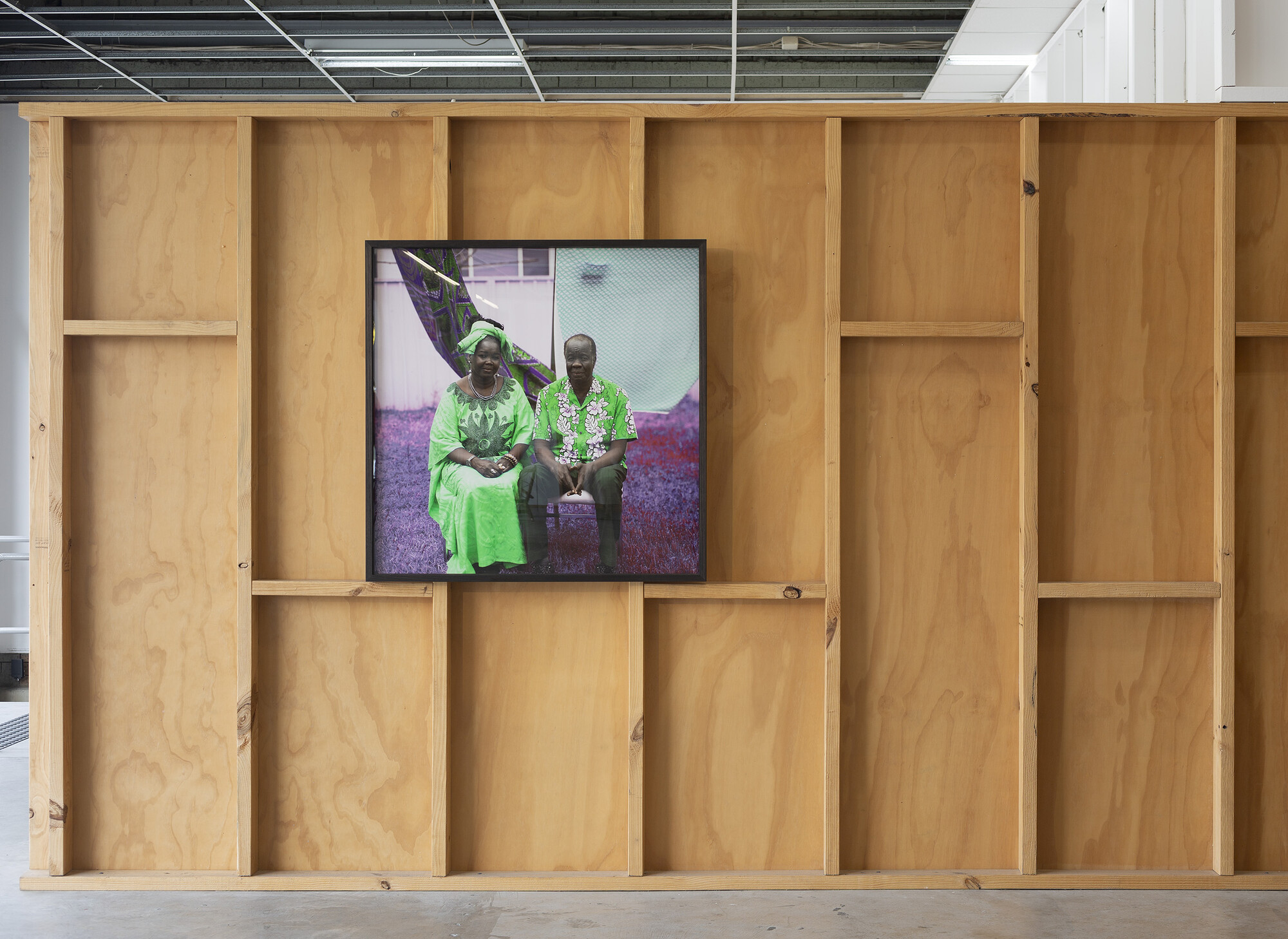
In line with the introspective tenor of pandemic-era art practice, the press release for Atem’s exhibition frames her new work in terms of mental health. We are informed that the twin wallpaper-scale photographic collages—one colour, one black and white—which are the centrepiece of the show “honour mental clarity, lucidity and depression in remission”. These two digital collages, the titular Everything in Remission and its black-and-white partner Sometimes in Retrograde (both 2022), present a kaleidoscopic world of densely layered imagery, and the optical snap between vibrant colour and monochrome in the two works does suggest an abrupt shift in perspective. However, it’s hard for me not to read these works as an extension of Atem’s interest in the staging of self and the camera’s ability to build both worlds and identities.

Everything in Remission presents a sumptuous dreamscape with a distinctively sci-fi flavour. Elaborately costumed figures pose like peacocks amongst an anti-gravity setting of fragmented architecture, landscape and starry sky. A group of camouflage-clad women populate the foreground of the work; these—I am told by gallery staff—are members of the South Sudanese resistance, and include the artist’s mother. At multiple points across the surface of the print, background and foreground become confused in a pixellated dissolve of Photoshop glitches: a seated figure’s hair and headdress take on the characteristics of their architectural backdrop; lush vegetation merges with an arid desert-scape, producing an interference pattern that echoes the camouflage clothing of the resistance fighters. Boundaries between self, other, figure and ground are permeable and the visual dissolution of the camouflaged body becomes indistinguishable from the peacocking of figures swathed in textiles that serve to dazzle and distract.

This wheeling profusion of imagery is accompanied by three portraits of the artist’s parents presented as discrete, framed images. The two sitters, shown side by side in tidy frontal orientation, smile benignly into their daughter’s camera from a make-shift backyard setting that explicitly evokes the 1950s portraiture of Seydou Keïta. As curator Okwui Enwezor observed, Keïta’s signature textile backdrops, which the photographer would rig up to demarcate a mobile studio, allowed him to incorporate quotidian elements of his Bamako neighbourhood into his immaculately staged images. Writing in the 2010 exhibition catalogue Events of the Self: Portraiture and Social Identity, Enwezor described how Keïta’s images helped to define postcolonial Malian society: “For a client to go to Studio Seydou Keïta meant something concrete, namely, to be inscribed and included in the emerging mythology of modern self-fashioning and in the striking cosmopolitan ambiance described by Manthia Diawara as Bamakois”.
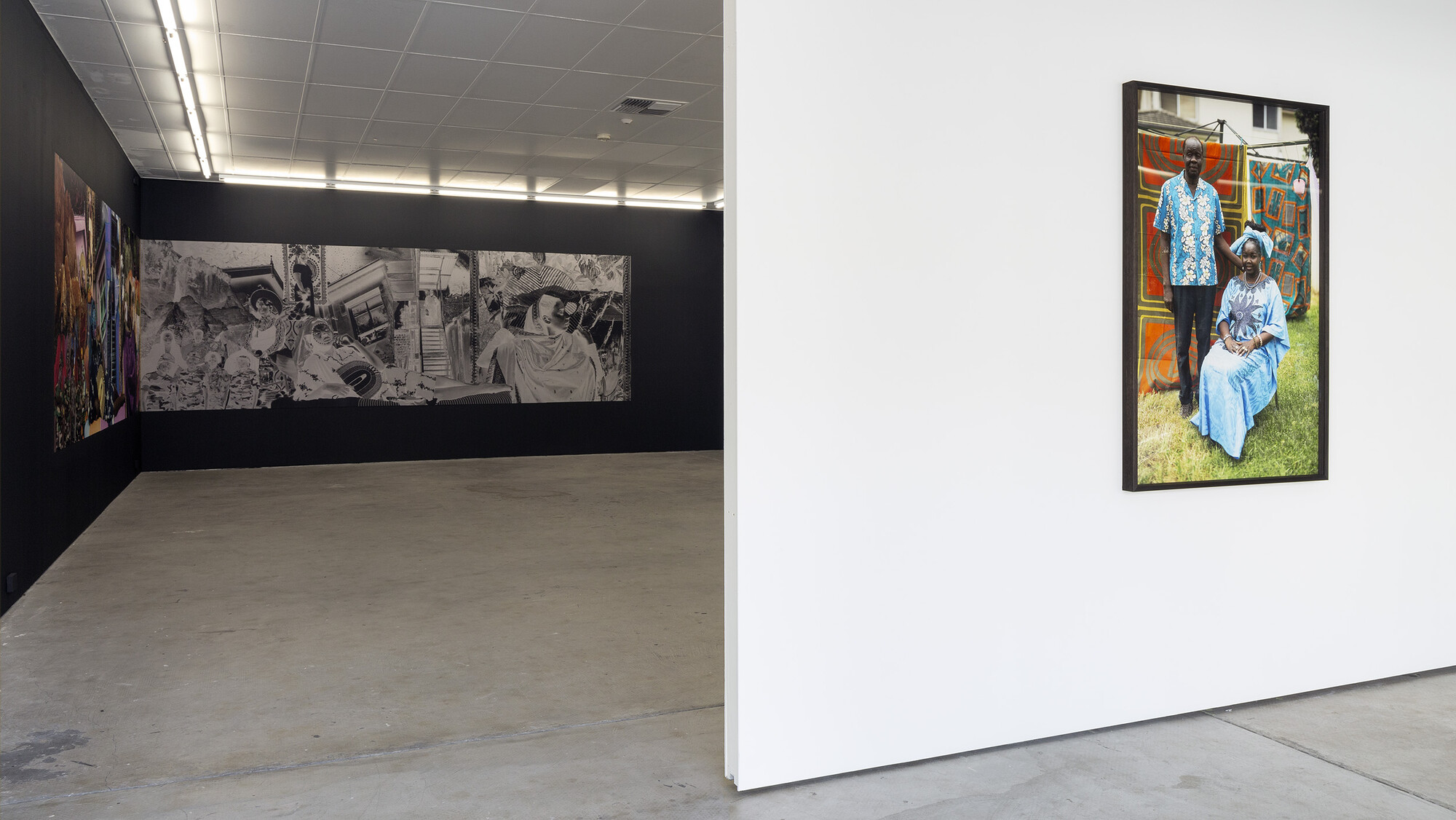
Atem’s portraits of her parents, then, connect to her earlier studio photography and serve to anchor her current explorations of the relationships between figure and ground. Linking her familial roots and artistic influences, these portraits acknowledge the ground from which she as an artist has emerged. Meanwhile, the environmental scale of the two large digital collages signals a potential new direction in Atem’s practice, as does the surprising inclusion of several soft sculptures in an adjoining space. These body-scale, alien-formed objects, encased in colourful print textiles, are mute and unquantifiable. In diametric opposition to the language of display spoken by Atem’s photographs, they are literally folded inward, swollen with a hidden interior mass. This sense of interiority, combined with the works’ domestic associations—they resemble soft toys or soft furnishings—provides a bridge to Vittoria di Stefano’s exhibition in the adjacent gallery.

The Palace at 4pm also establishes a dreamscape assembled from domestic materials. Here, however, the register is firmly surrealist rather than sci-fi. A series of elegant sculptural assemblages produced from the carcasses of deconstructed retro furniture strike poses in front of a wall painting inspired by 1970s graphic and interior design. The overall effect is rather like a magazine spread of a fashion shoot and—as with fashion—the works also reward detailed inspection. Di Stefano has used bronze, textiles and resin in a carefully coordinated colour palette to make jewel-like additions and inlays that play off against the sleek curves and satin-finished wood grain of the furniture.
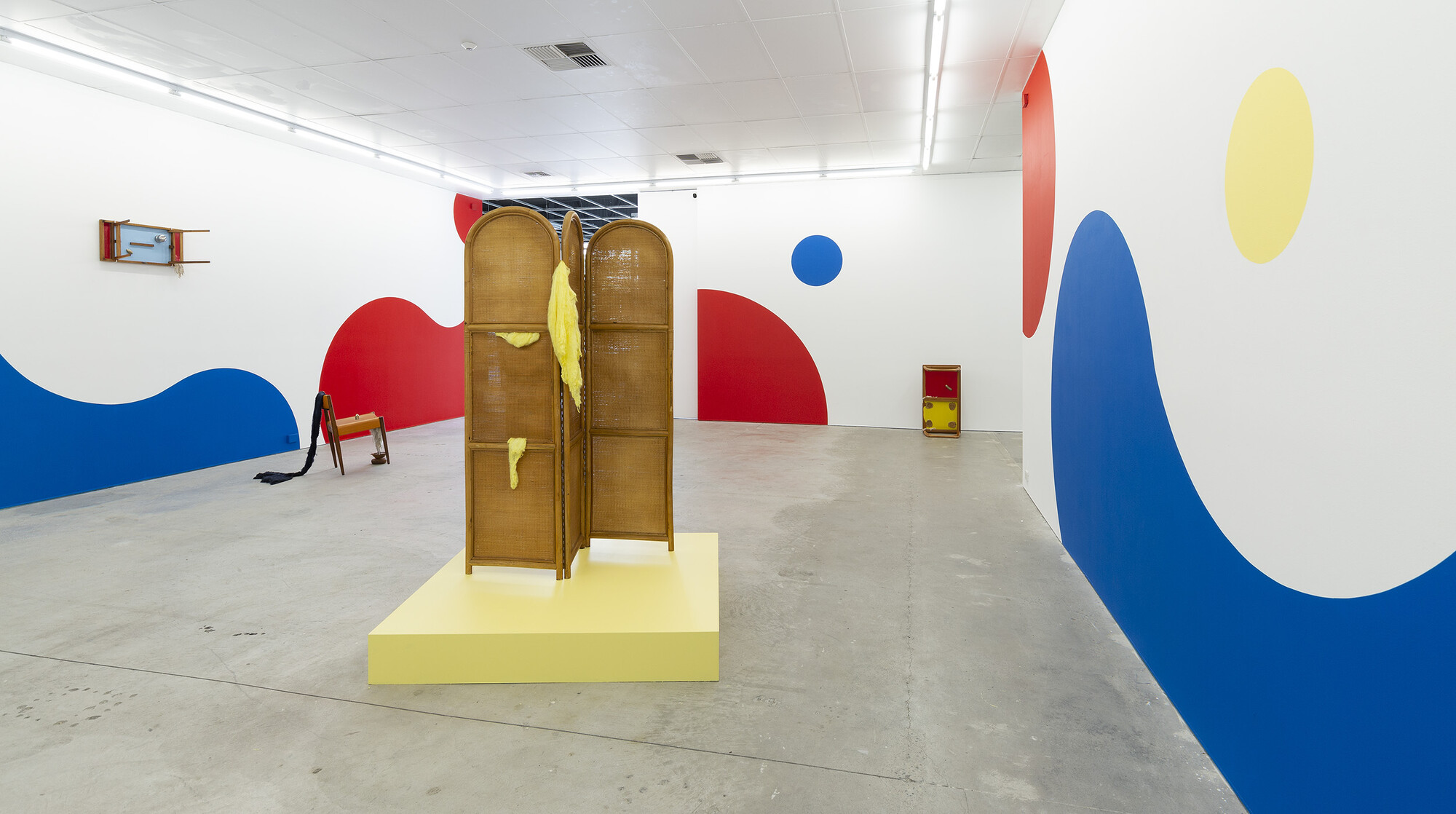
At the heart of twentieth-century surrealism was a transgressive impulse: plumbing the depths of the unconscious, surrealists sought to undermine modern bourgeois rationality by revealing the unruly desires at its foundations. The suppressed and outmoded were reinserted as uncanny glitches in the cogs of capitalism. Often what they dredged up was laced with eroticism, and often also with misogyny. The “transgressive” female body frequently stood as an embodiment of radical alterity, or—even worse—became the object of violent fantasies. Di Stefano’s works similarly attempt to recover the libidinous energies of the outmoded, however mercifully her approach is much more playful. Alongside the explicitly sexual imagery of her Half Light (2022), a chair that laces up like a corset, numerous works sport cheeky tufts of 70s alpaca wool, or phallic appendages that emerge, beckoning winsomely, out of the surface of a table or chair. Her title, The Palace at 4pm, cites Alberto Giacometti’s famous sculpture The Palace at 4am (1932), but transposes its moody nocturnal ambiance into something more like a sunny afternoon. The jaunty colours of Di Stefano’s wall painting evoke, for me, a poolside mural and the sharp tang of chlorine. The odd, blobby abstract self-portrait at the centre of Giacometti’s sculpture reappears comically here as a blushing pink banana surfacing out of a bowl of creamy lemon-yellow resin.
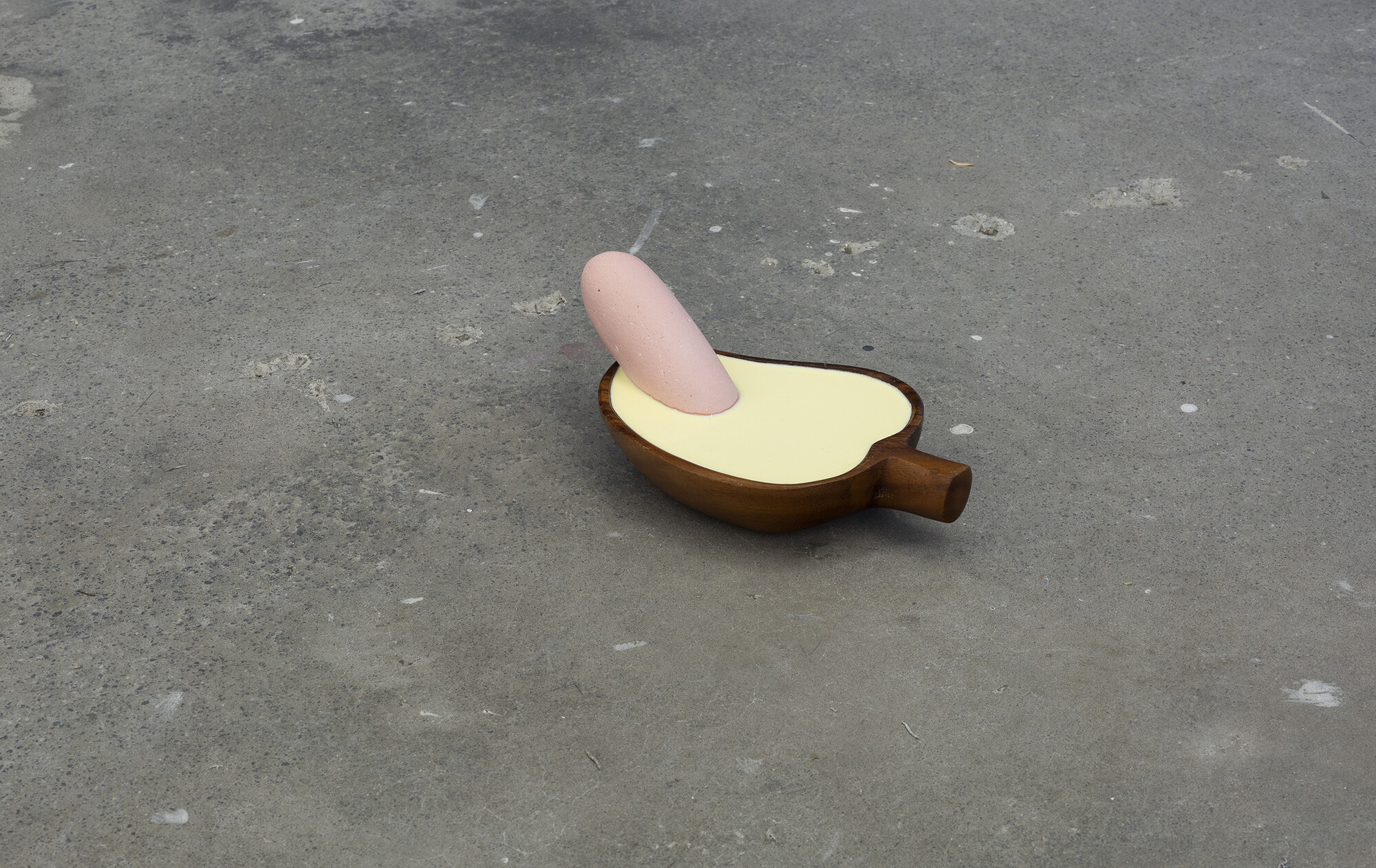
While Di Stefano’s work isn’t overly burdened by surrealism’s dark melodrama, she does take up many of its other strategies and interests. I’m less interested in her use of the material language of surrealism—the nostalgic reclamation of dated domestic objects that stand as body-surrogates; the fetishistic isolation and juxtaposition of fragments, details and part-objects—than I am in the absolutely fastidious staging of these works. They are as camera-ready as any of the elaborately styled models in Atem’s photographs. The bright, flat pools of resin that occupy crevices in many of the sculptures provide an opportunity for Di Stefano to gesture towards things hidden, suppressed or unarticulated—small objects surface from these pools as if from the depths of a dream—however, the resin also, simultaneously, functions to provide a decorative pop of colour like the ones typically seen in enamelled jewellery. As in works by the artist Jessica Stockholder, Di Stefano uses colour as a compositional tool. Her works seem staged for the camera, as if she’s created and installed these sculptures with their future photo-documentation front of mind.
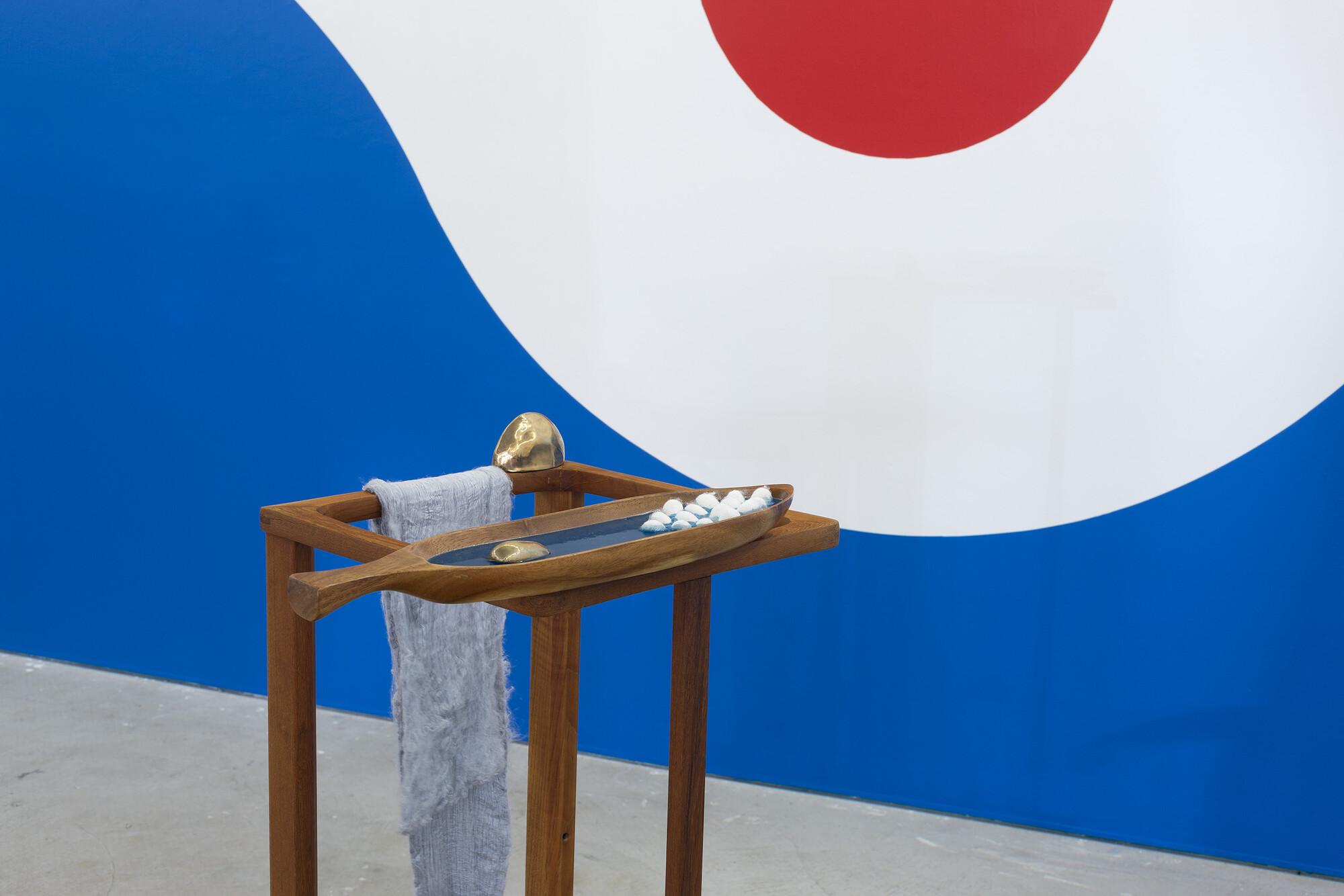
Even though this is a sculpture show, the work seems to anticipate its own photography in a way that somehow echoes surrealism’s own take-up by commercial interests and its conversion into compelling décor. Surrealism was, theoretically at least, utterly opposed to commerce. In practice, however, there was a lively exchange between surrealist artists and the designers who recognised the commercial potential of their unsettling, sexy, glamourous imagery. Giacometti, for example, collaborated with the fashion designer Elsa Schiaparelli and interior decorator Jean-Michel Frank. Man Ray worked for Vogue and Harper’s Bazaar, and certainly understood how well surrealist objects could photograph. Another kind of object that photographs very well, and regularly stars in glossy interior design publications, is mid-century modern furniture.
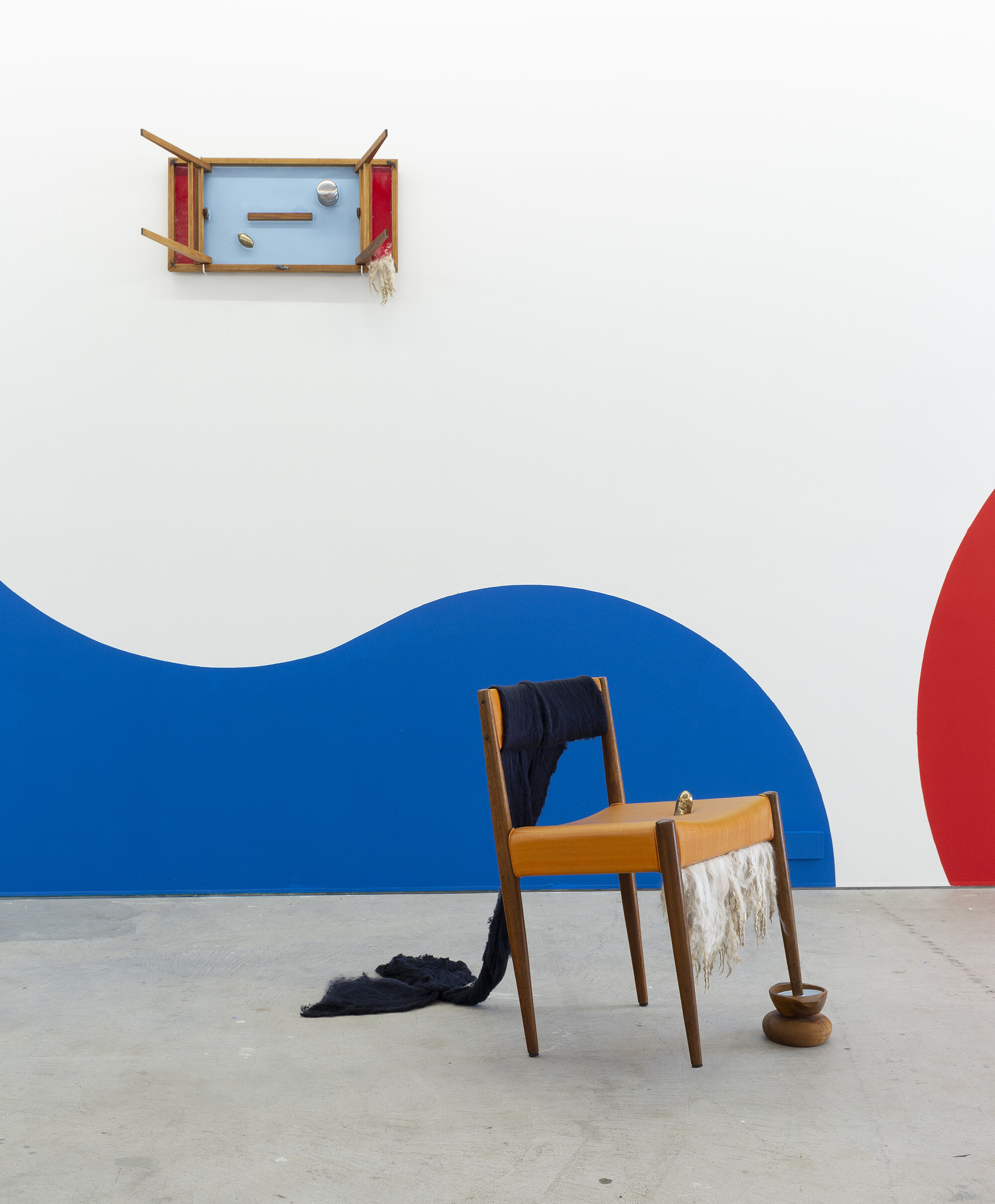
Gertrude Contemporary, now located in Preston, was gentrified out of Fitzroy by businesses specialising in (among other things) “curated” displays of mid-century modern furniture destined for the living rooms of their well-heeled inner-north clientele. Di Stefano’s fetishistic window display of erotic-surrealist mid-century furniture, overlooking High Street from behind Gertrude’s plate-glass street frontage, is therefore deliciously ironic.
A photographic sensibility, highly attuned to the staging of figure-ground relationships and conscious of how photographic images can function to both reveal and produce subjectivity, links these otherwise quite different exhibitions. The photographs that have shaped our collective recollection of 1930s surrealism and that hold up mid-century furniture as an emblem of elegance and social status have also primed me to be seduced by the luxury finishes and technical precision of Di Stefano’s works. Photography is obviously Atem’s primary tool as she works with her sitters and models to together produce images of subjectivities entangled and interdependent with their cultural contexts. Atem’s fluency in the language of display is echoed in the way Di Stefano’s sculptures also enact the staging of desire: this connection is what this juxtaposition of exhibitions ultimately reveals.
Anna Parlane is a lecturer in art history and theory at Monash University.


